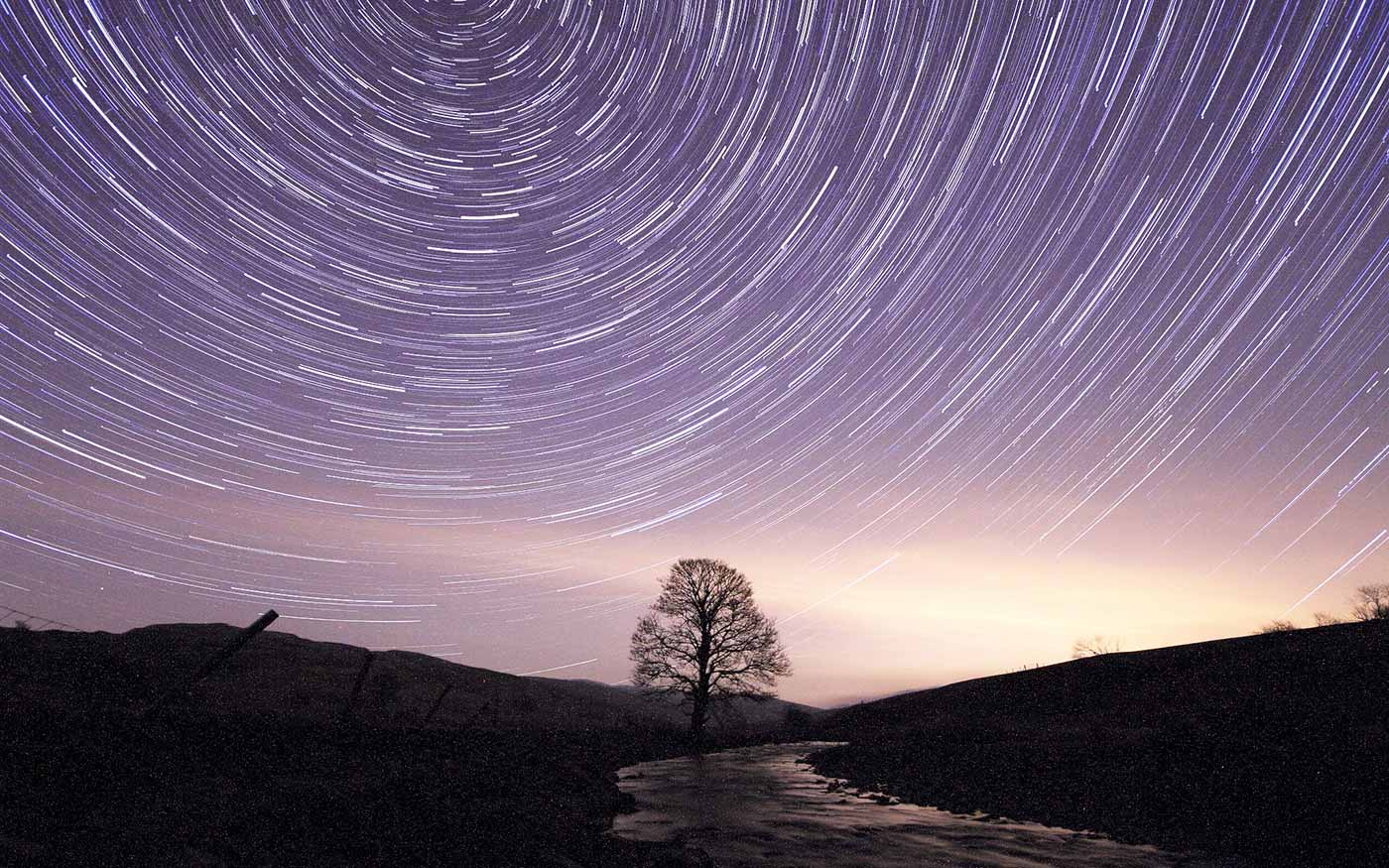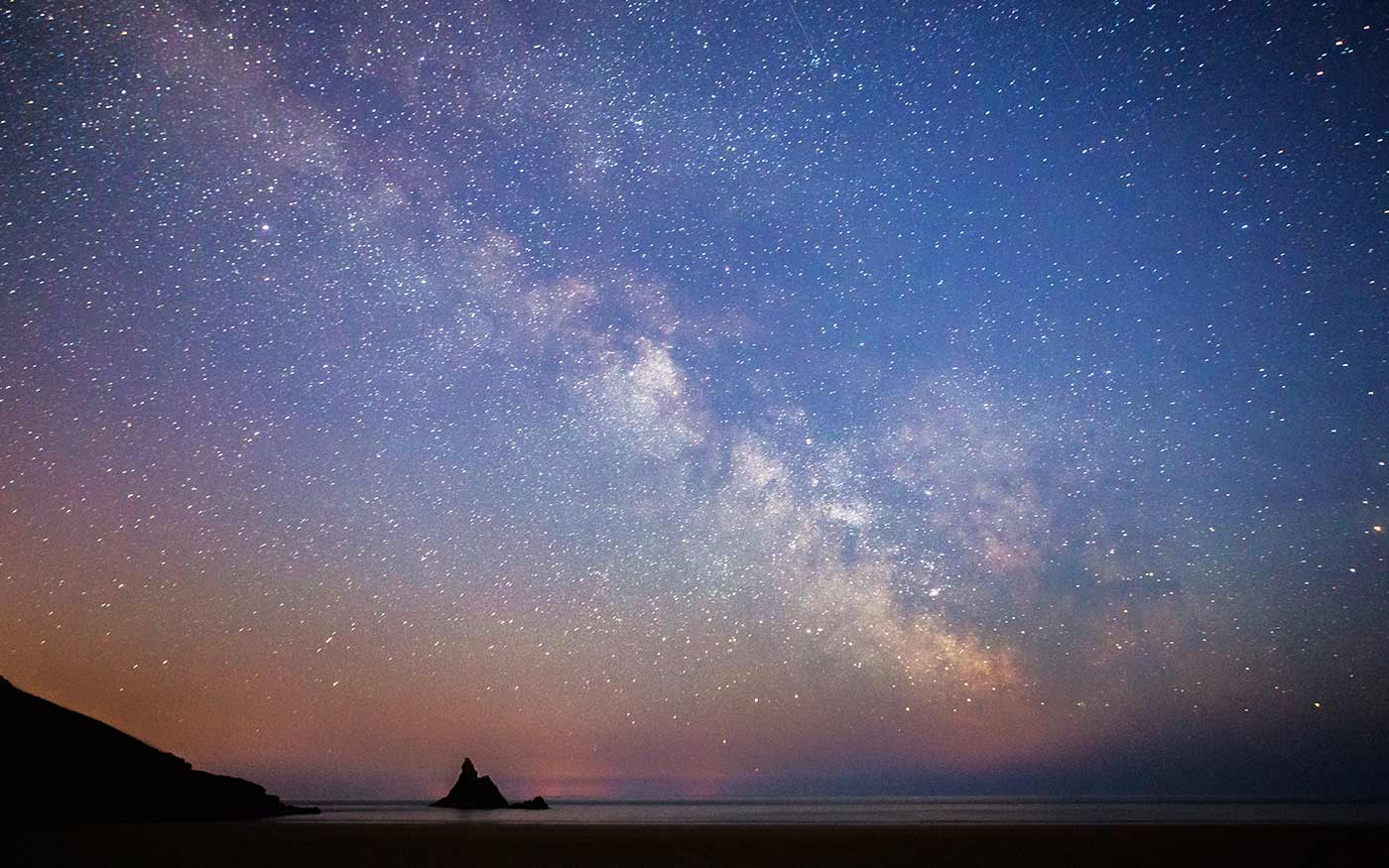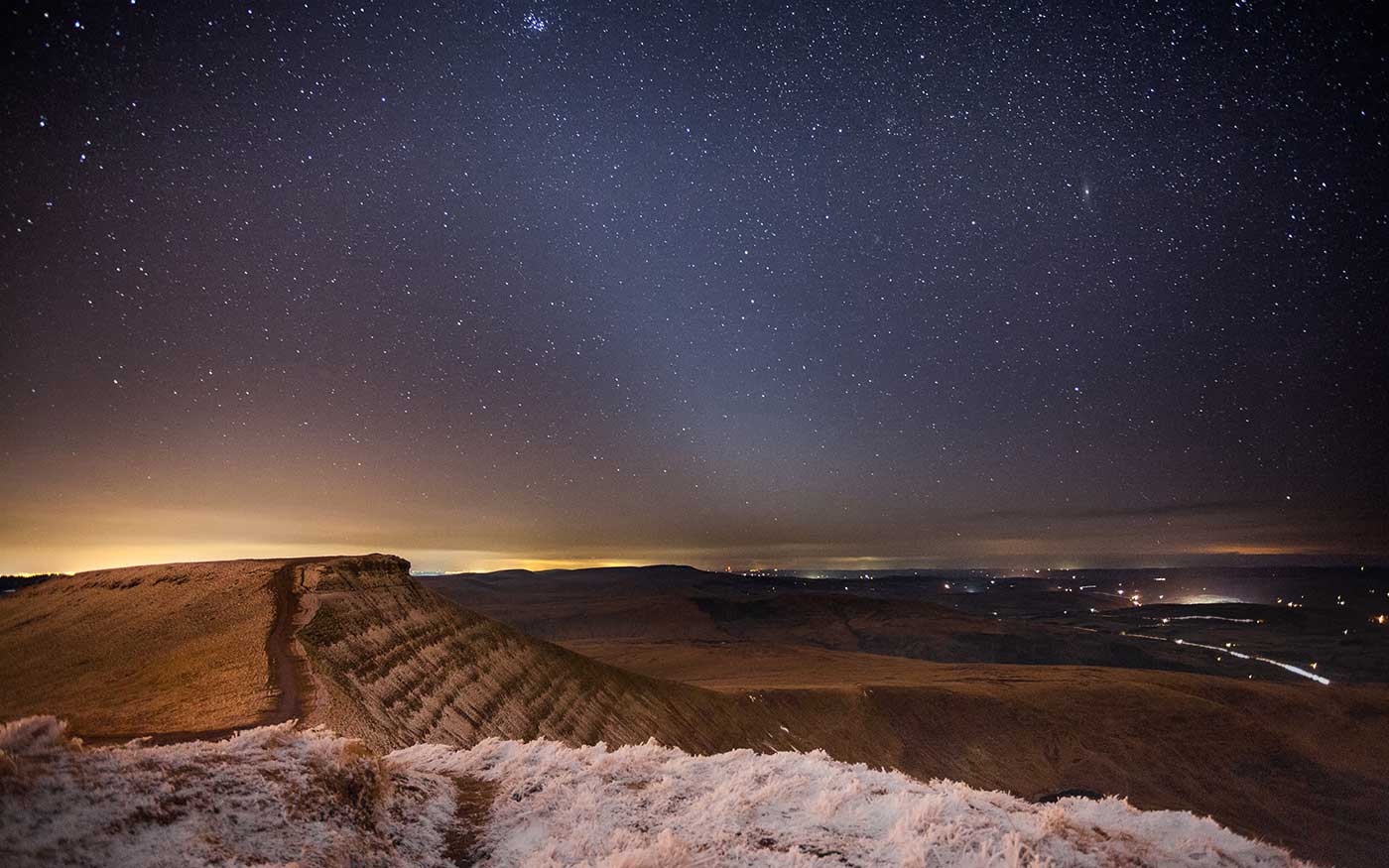Blog
Awyr y Nos: Gorffennaf 2020
19.06.20
8th: Venus will be shining at its brightest in the morning, 35º above horizon during Sunrise (figure 1). Distance from Earth, will be approximately 65 million km.

Figure 1: Venus at brightest.
11th Moon and Mars will be in conjunction. Visible during dawn at 00:29 (BST) until 04:46 (BST). Appearing in the constellation Cetus (figures 2, 3 & 4).

Figure 2: Conjunction of Moon and Mars.

Figure 3: Constellation Cetus.
The Moon and Mars will be visible to the unaided eye and through a pair of binoculars. The Moon will be approximately 407000 km from Earth, while Mars will be approximately 113 million km from Earth.

Figure 4: Moon and Mars in conjunction.
27th: The Moon will be in first quarter, visible at approximately 21:40 (BST) above South West horizon, disappearing at 00:30. It will appear half illuminated at this time in its monthly cycle of phases (figure 5 & 6). The moon will be approximately 368000 km from Earth.

Figure 5: Moon at first quarter.
Figure 6: Moon at first quarter.
28th: The Piscis Austrinid meteor shower (figure 7) will be observable. Active from 15th July to 10th August, with peak rate of meteors 28th July. The radiant point will be in the constellation Piscis Austrinius (figure 8). Visible from 00:40 to 04:55. Best display will be just before dawn.

Figure 7: Piscis Austrinid meteor shower.

Figure 8: Constellation Piscis Austrinius.
29th: Alpha (α) Capricornid meteor shower (figure 9), active from 3rd July to 15th August, producing peak rate of meteors approximately 29th July. The meteor shower will happen in the constellation Capricornus (figure 10). The meteor shower will be observable during the hours of darkness. Best display of meteors will be at approximately 01:00 (BST) on 30th July. Parent body for the meteor shower is comet 169P/NEAT (figure 11). Comet 169P/NEAT, a large comet controlled by Jupiter's gravitational effects. NASA has classified 169P/NEAT as a "Near Earth Asteroid" due to its orbit's proximity to Earth, but it is not considered potentially hazardous because computer simulations have not indicated any imminent likelihood of future collision.
169P/NEAT orbits the Sun every 1540 days (4.22 years), coming as close as 0.61 Astronomical Units (AU’s) and reaching as far as 4.60 AU’s from the Sun. AU = Astronomical Unit which is the distance from Earth to Sun. Distance from Earth to Sun is 150 000 000 km. Therefore 1AU = 150 000 000 km.![]()

Figure 9: Alpha (α) Capricornid meteor shower.

![]()
Figure 10: Constellation Alpha (α) Capricornus, radiant point.

Figure 11: Comet 169P/NEAT (parent body).
WARNING: Never attempt to view through binoculars, telescope or any optical aid an object near to the Sun. Also, never attempt to view the Sun, aided or unaided, doing so may result in immediate and permanent blindness. Always use astronomical approved viewing equipment. The Stellarium software will assist greatly in locating objects in the sky.
Mark R Smith FRAS
Physicist
Nuclear Fusion Physics
Astrophysics
Efallai y byddwch hefyd fod â diddordeb mewn...
Syllu ar y Sêr
Creuwch eich gwyliau 24/7 unigryw eich hun. Profwch anturiaethau epig o doriad gwawr tan y cyfnos yn nhawelwch, ysblander ac unigedd tirweddau rhyfeddol Cymru.
Gweithgareddau
Mae awyr dywyll rhyfeddol y Parciau Cenedlaethol yn darparu amgylchiadau perffaith er mwyn gwylio’r planedau, y lleuad a’r sêr gydol y flwyddyn.

Eryri
Parc Cenedlaethol Eryri yw'r ail ardal yng Nghymru i gael ei dynodi yn Warchodfa Awyr Dywyll Ryngwladol. Dim ond deuddeg o warchodfeydd o’r fath sydd yn y byd, ac ar noson glir yn Eryri gallwch weld y Llwybr Llaethog, yr holl brif gytserau, nifylau (cymylau llachar o nwy a llwch) a sêr gwib.

Arfordir Penfro
Mae gan Barc Cenedlaethol Arfordir Penfro fwclis o safleoedd darganfod awyr dywyll. Mae gan arfordir gwyllt a garw a chefn gwlad Sir Benfro fantais o rai o'r cyfleoedd awyr dywyll gorau yn y wlad, lle mae'n bosibl syllu ar y Llwybr Llaethog neu gytserau fel Orion gyda'r llygad noeth.

Bannau Brycheiniog
Parc Cenedlaethol Bannau Brycheiniog oedd yr ardal gyntaf yng Nghymru i ennill statws rhyngwladol Awyr Dywyll. Yn ymestyn o'r ffin â Lloegr i bellafoedd sir Gaerfyrddin ac o Gymoedd y De i’r Canolbarth, mae llawer o gyfleoedd i weld peth o'r awyr dywyllaf yn y DU yn ein tirwedd hardd ac amrywiol.

Project NOS
Creuwch eich gwyliau 24/7 unigryw eich hun. Profwch anturiaethau epig o doriad gwawr tan y cyfnos yn nhawelwch, ysblander ac unigedd tirweddau rhyfeddol Cymru.

Wythnos Awyr Dywyll Cymru
Creuwch eich gwyliau 24/7 unigryw eich hun. Profwch anturiaethau epig o doriad gwawr tan y cyfnos yn nhawelwch, ysblander ac unigedd tirweddau rhyfeddol Cymru.
